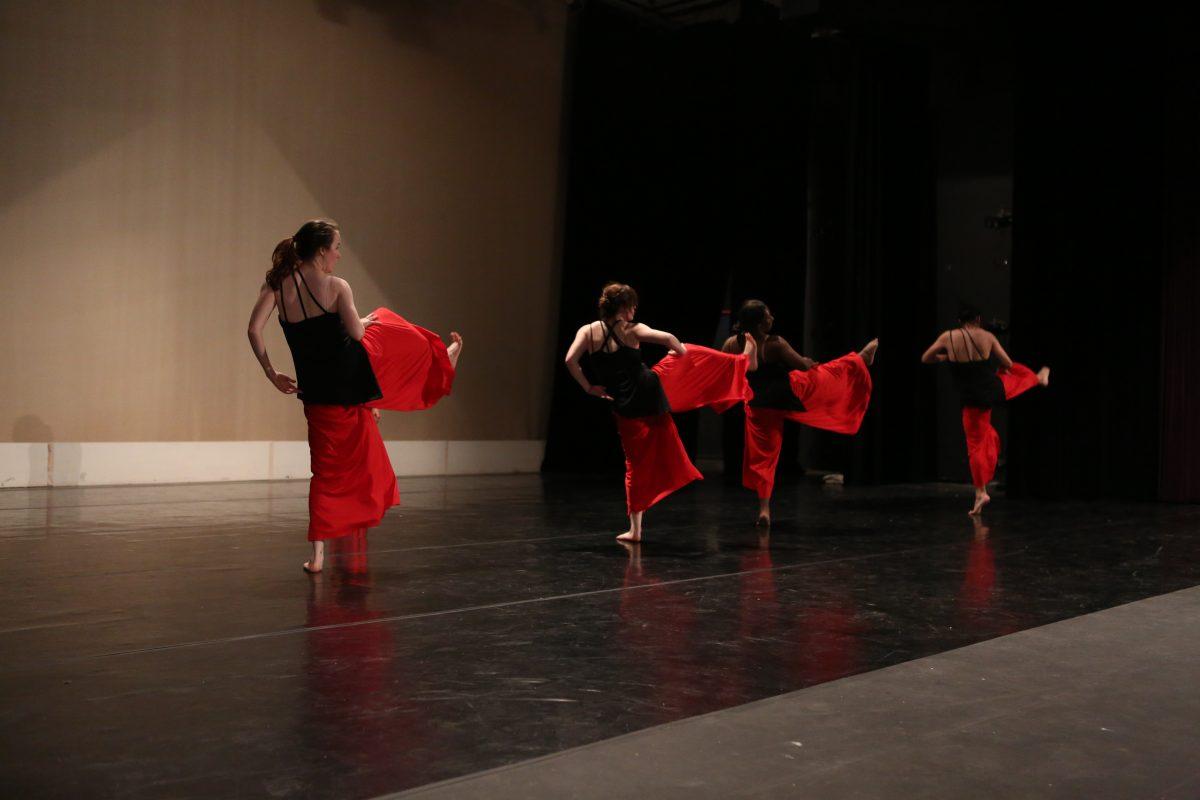Michele Hanlon and Monica Saba had worked together in the Dancers Unlimited Repertoire, a dance company in the Dallas-Fort Worth area, for a couple of years.
When a position to teach opened up at UTD in the spring of 1995, Hanlon, already an instructor at UTD, brought Saba in to be a dance professor alongside her.
Since then, the program and quality of dancers have grown tremendously, and it has been a beautiful journey teaching, Saba said.
“We would take anybody and everybody and create dances on people who had never danced before,” she said. “It was great though; you opened up this whole new world to them.”
Saba worked with Dancers Unlimited for 10 years and also worked independently on several projects. Despite working with various dance forms, she truly identifies with contemporary dance.
“Modern dance is (the language) where Michele and I speak the best,” Saba said. “We can teach many, many disciplines, but modern dance is our home.”
Her choreography is fluid with several different pieces working in sync to create a cohesive picture for the audience, just like in her Saba’s where she juggles a lot as a mother, teacher and choreographer.
“Michele and I joke that without knowing before, she would know if it’s my piece, and I would know the same,” Saba said. “No matter how hard we try to be different, there are some signature moves we can’t avoid.”
Saba’s pieces come from a place deep within, she said, and resonate with her feelings strongly, feelings that she is unable to put into words at times.
“For a choreographer a lot comes out,” she said. “Sometimes you’re not able to talk about it, but you’re able to get it out (on the dance floor).”
Saba’s pieces use a lot of phrase manipulation where she uses time, space and energy to build on a move to a 32- or 64-count music, she said.
As a dancer, staying in shape is crucial. Performers have to take as many classes as they can to maintain their body and form. When she was younger, Saba would often head over to dance classes at her alma mater, Southern Methodist University, even after graduating, so she could learn and perfect her moves.
Between rehearsals, classes and performances, a dancer’s life can become very irregular, so staying in shape can be a challenge.
“It’s a discipline of the dance form,” Saba said. “My theory is if you want to do it, you just have to do it. If you don’t, then you don’t want it bad enough.”
Saba said she transitioned smoothly from a performer to teacher.
She enjoys choreography, putting together pieces where a dancer makes a move and the other one responds. Her pieces build out of the studio, one step at a time, and over time she has learned what works and what doesn’t.
“We learn from all the things we get exposed to,” Saba said.
She remembers a time when she felt like she’d fallen flat and run out of ideas. Despite being a much older student at the time, she went back to school her master’s at the University of Wisonsin -Milwaukee.
It was a low-residency dance program during the summer semester and the feedback on her pieces helped her get the extra push she needed to find herself back in her element, Saba said.
No matter how long a dancer has been choreographing, there are never any new steps, just a dancer’s own interpretation of those moves that make them unique, she said.
“We learn from each other, and even if we are repeating what we saw or an idea that we saw, it’s still going to be different because it’s us, not them,” Saba said. “That’s why I like modern dance because it’s your individual self … the individual personality of every choreographer that does it.”







